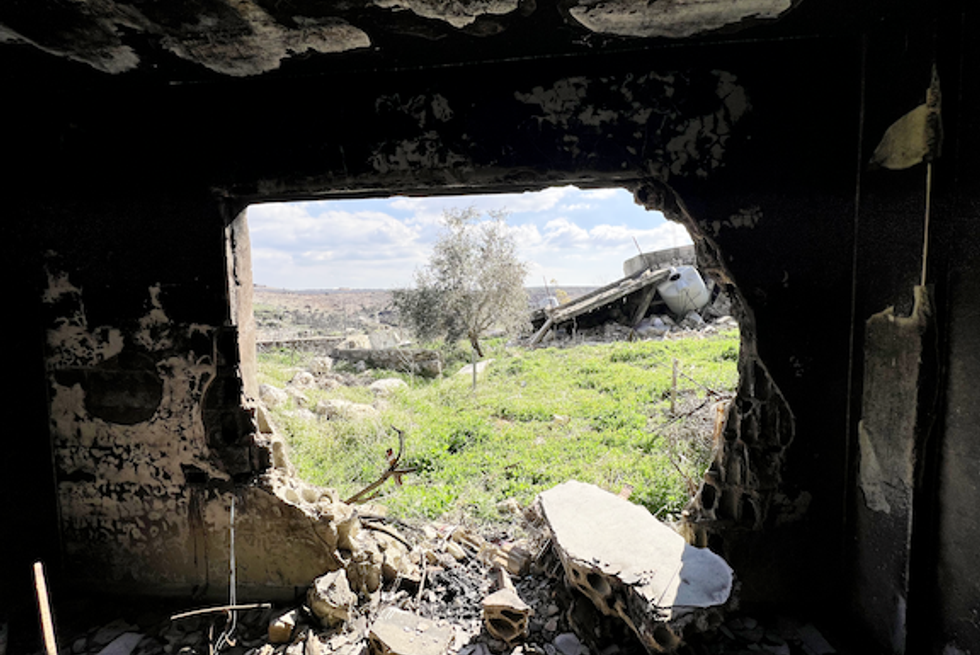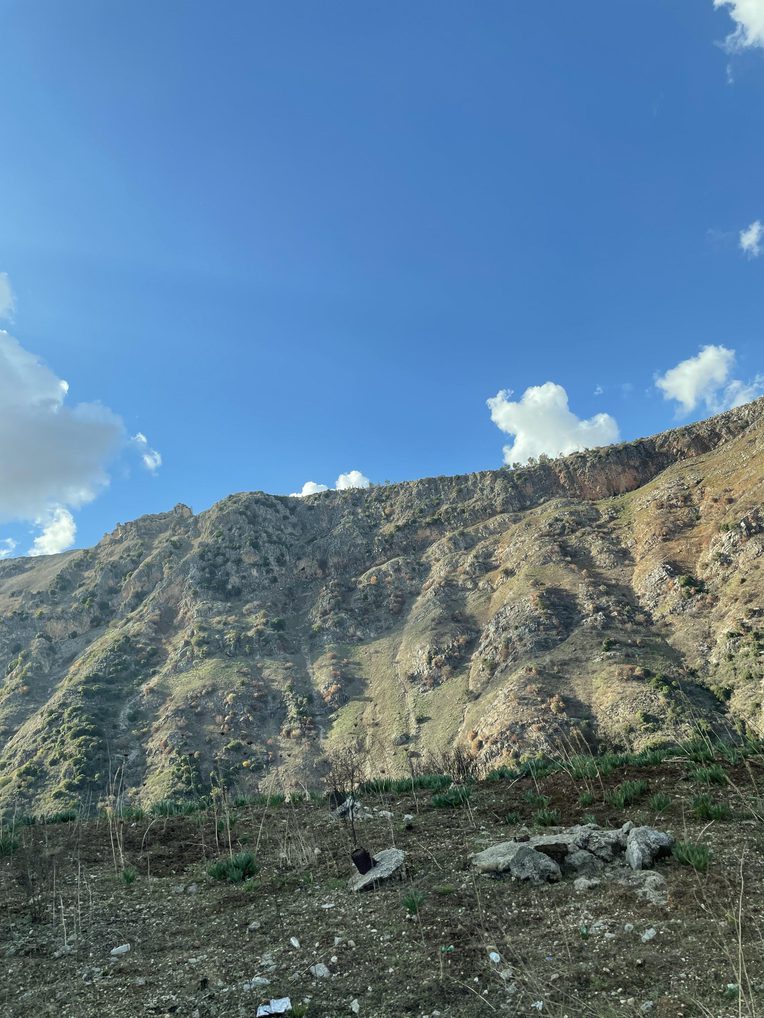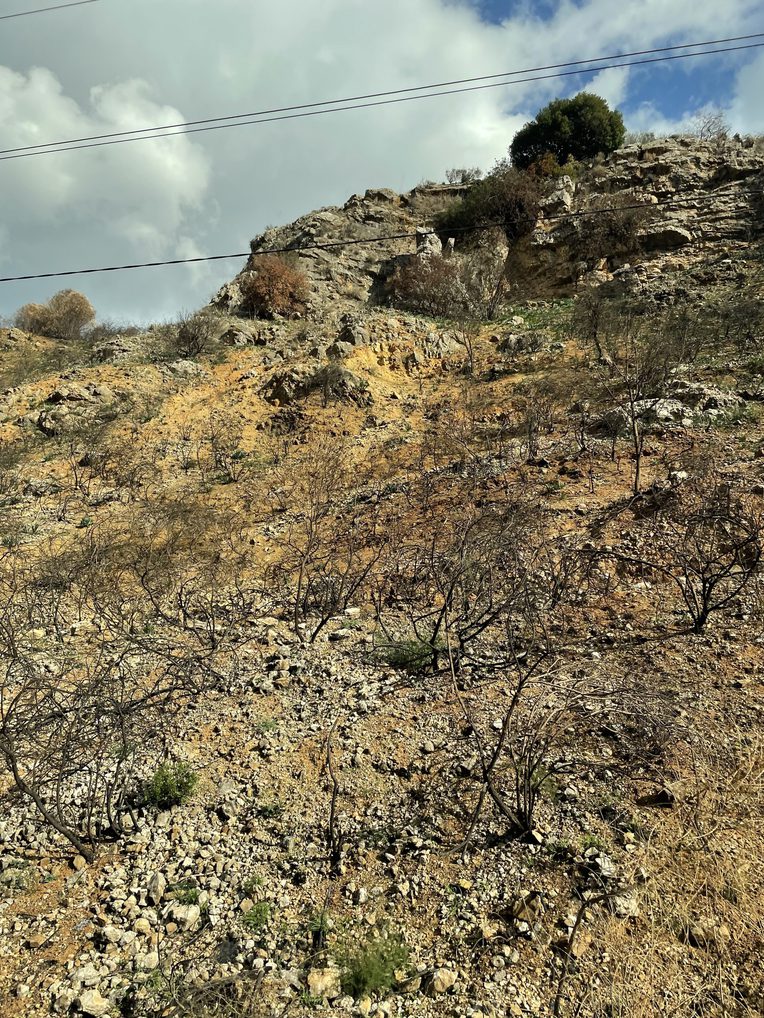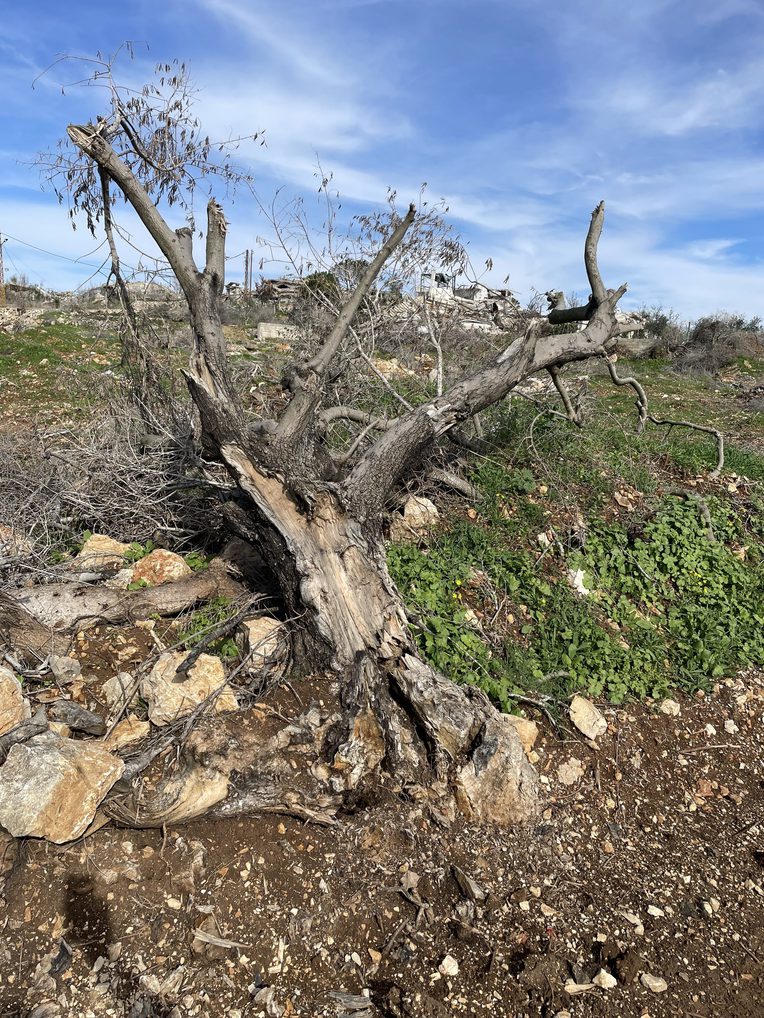Terra Devastata: The Israeli Project for South Lebanon
From the Series: Another Season of War in Lebanon
From the Series: Another Season of War in Lebanon

Israel does not simply destroy—it invades, colonizes, and erases. It tears Indigenous people from their land, leaving scars that run deep and endure through generations. This is the nature of settler colonialism: to sever humanity from its roots. It targets either the people themselves or the land that sustains them, often both.
When Israel unleashed white phosphorus in October 2023, Israel did more than light up the night for the next fourteen months. It asphyxiated people, burned children, torched forests and orchards, poisoned the soil, tainted the water, and turned fertile fields into wastelands.

Terra Devastata is a project that is as old as Israel itself. Since its creation, the Zionist state has sought to tear the people of Lebanon and Palestine apart and from their land. The events of 2024 are a grim echo of 2006, when South Lebanon faced an unprecedented assault during the July War. Israel’s use of cluster munitions then and its deployment of white phosphorus in 2024 reveal a pattern of destruction designed to render land uninhabitable and communities permanently uprooted.
In 2006, an estimated 4 million sub-munitions were deployed across South Lebanon, with nearly one million unexploded ordinance contaminating the land. This legacy of war turned over 20,300 hectares of agricultural, pasture, and forested land into danger zones. By 2019, despite extensive demining efforts, 1,176 hectares of agricultural land, 2,404 hectares of pastures, and 650 hectares of forests remained contaminated. The deployment of unexploded ordinance was not only about immediate destruction but also about perpetuating long-term environmental harm. The deliberate timing of cluster strikes—90 percent of which occurred in the final 72 hours of the war—emphasizes the intent to impose enduring harm. This strategy resonates chillingly with the current use of white phosphorus and other ecocidal ammunitions, underscoring an ongoing attempt to weaponize the land itself.
White phosphorus burns when it meets the air, subliming into dense white smoke that engulfs everything in its path. It burns fiercely, hungrily, and without mercy. The fires it ignites rage brightly. Even when those fires die, the damage lingers.
Driving through South Lebanon on December 13, 2024, the evidence of devastation is everywhere. From Nabatiyeh to Khiam, the landscape is a mosaic of destruction. The colossal Shqeef citadel (also known as the Beaufort castle) surveys vast stretches of blackened olive trees and charred forests alternating with thin rivulets of green, spared by chance or geography. The sight of the Khardali bridge over the Litani River is haunting, flanked by barren patches that speak of white phosphorus’s reach. The air itself seems heavy with the memory of fire; the skeletal remains of pine and oak stand as solemn witnesses to the assault.

Towards Khiam and deeper into the south, the destruction spread relentlessly like a shadow that spares nothing, orchestrated to erase both the landscape and the lives tied to it. Farmers recount stories of entire harvests lost, of fields once vibrant now reduced to ash. These are not just fields; they are lifelines. The landscapes bear the marks of calculated violence—as if the intent was not to invade but to erase.
According to satellite imagery and field surveys analyzed by WhitePhosphorus.info, over 4,500 hectares (11,120 acres) of agricultural and forested land in South Lebanon have been directly affected by white phosphorus contamination. Entire valleys, once lush with olive orchards and oak thickets, now lie as charred ruins. Avocado plantations, wheat fields, and citrus groves in the affected areas were destroyed, crippling local economies dependent on their yield.
For farming communities of South Lebanon, the land is more than a source of livelihood—it is a foundation of resistance. Generations have sustained themselves through its olive oil, fruits, and grains. The destruction of this agrarian base is not only economic but cultural as well. As in 2006, farmers faced displacement. They are unable to access or cultivate fields contaminated by white phosphorus or unexploded ordinance. This forced migration not only disrupts livelihoods. It also severs ties to heritage and identity. Forced to abandon the soil they have tilled for centuries, many farmers are pushed into urban centers or neighboring countries, losing their identity as stewards of the earth.

The water is no safer. As white phosphorus reacts with the atmosphere, it produces phosphorus pentoxide, which falls back to earth as acid rain. Phosphorus seeps into rivers and streams, tainting the water table. The enrichment of water bodies with phosphorus enhances the uncontrolled growth of algae, depleting oxygen and suffocating aquatic ecosystems. White phosphorus can also remain unchanged, as poisonous sediments in the bottom of rivers and ponds. For communities reliant on springs and wells, this contamination is a betrayal by the very element that sustains life.
In Lebanon’s fissured karstic limestone terrain, water contamination by white phosphorus and other contaminants such as heavy metals spreads rapidly through interconnected aquifers, making purification nearly impossible. Villagers relying on these water sources for agriculture and drinking are left vulnerable, their once-reliable springs turned into conduits of harm.
The fight to remain on the land is a fight for dignity and survival. Agrarian livelihoods have long been a cornerstone of resistance against the Terra Devastata project to dispossess communities and force their exile. To farm is to assert a claim to the land, to refuse erasure.
Recovery from white phosphorus and other scars of war is essential for the survival of these communities. Our team at the American University of Beirut is working to train farmers to sample their fields methodically and scientifically. Our laboratory analyzes the samples and will provide guidance for rehabilitation. But true recovery requires international recognition of the environmental crimes committed by Israel and support for sustainable redevelopment.
The farmers of South Lebanon are custodians of the land’s memory. Their resilience is evident in their determination to heal the soil, replant the orchards, and rebuild their villages. In so doing, they reclaim not only their livelihoods but their identity and history as well.